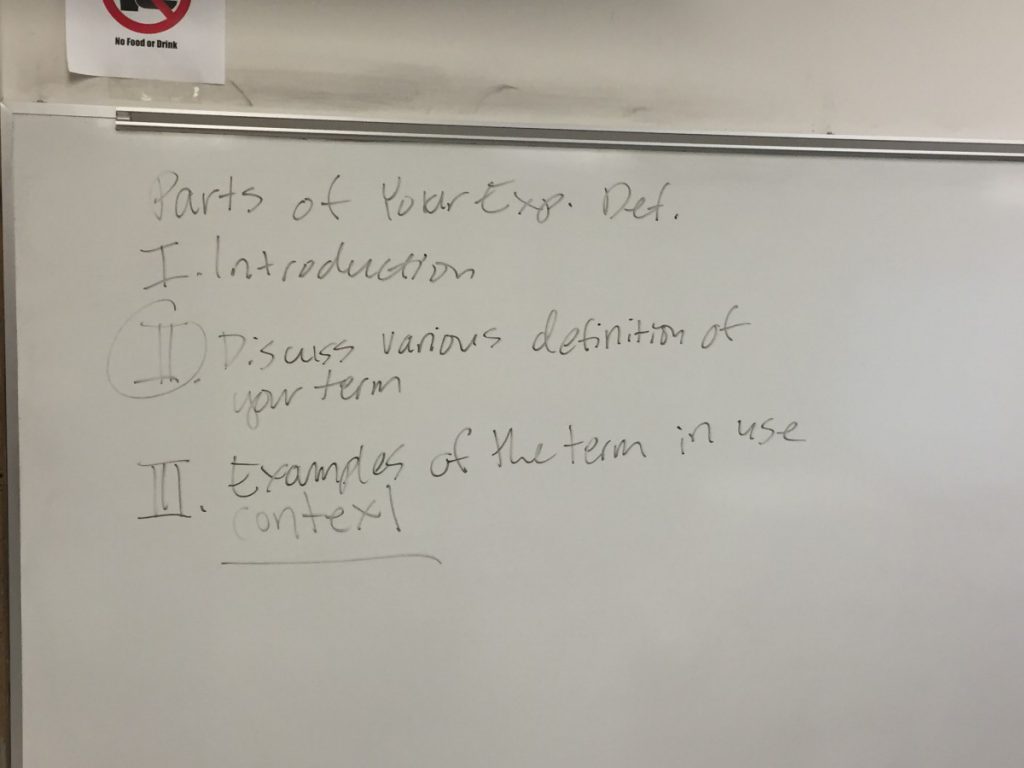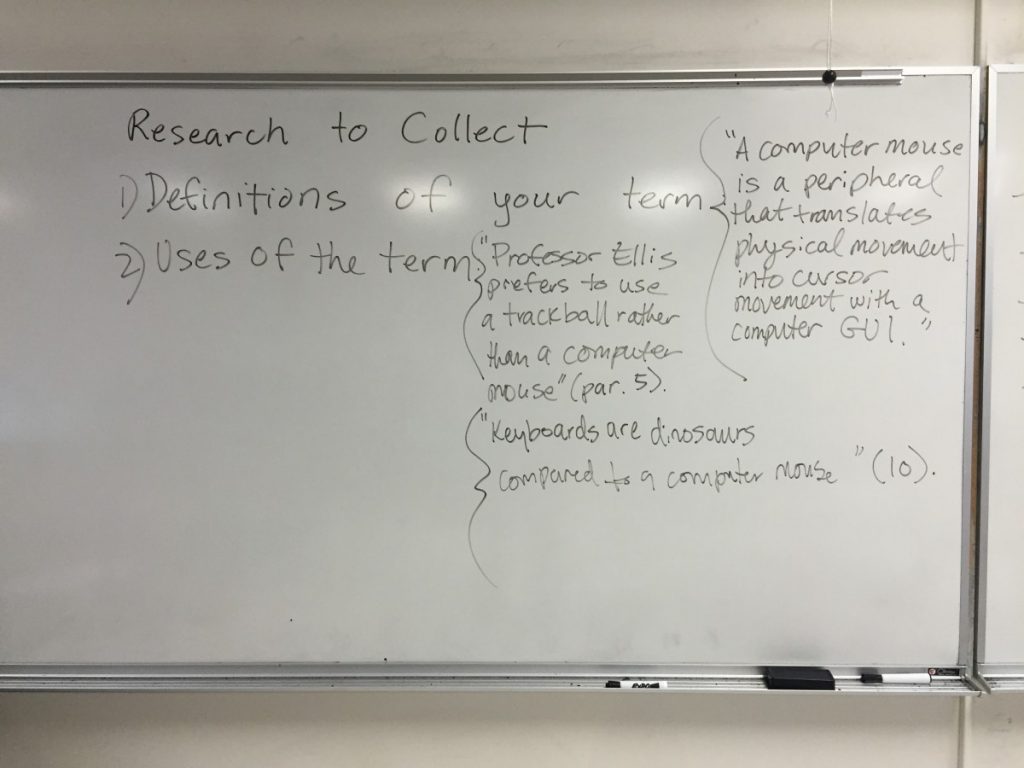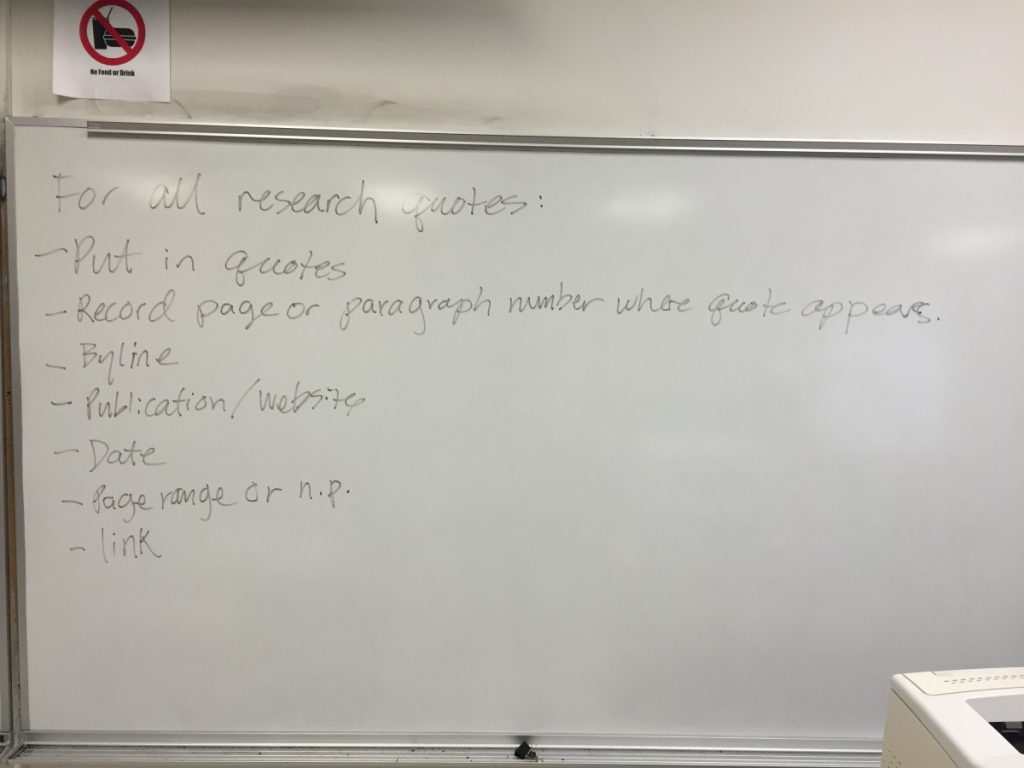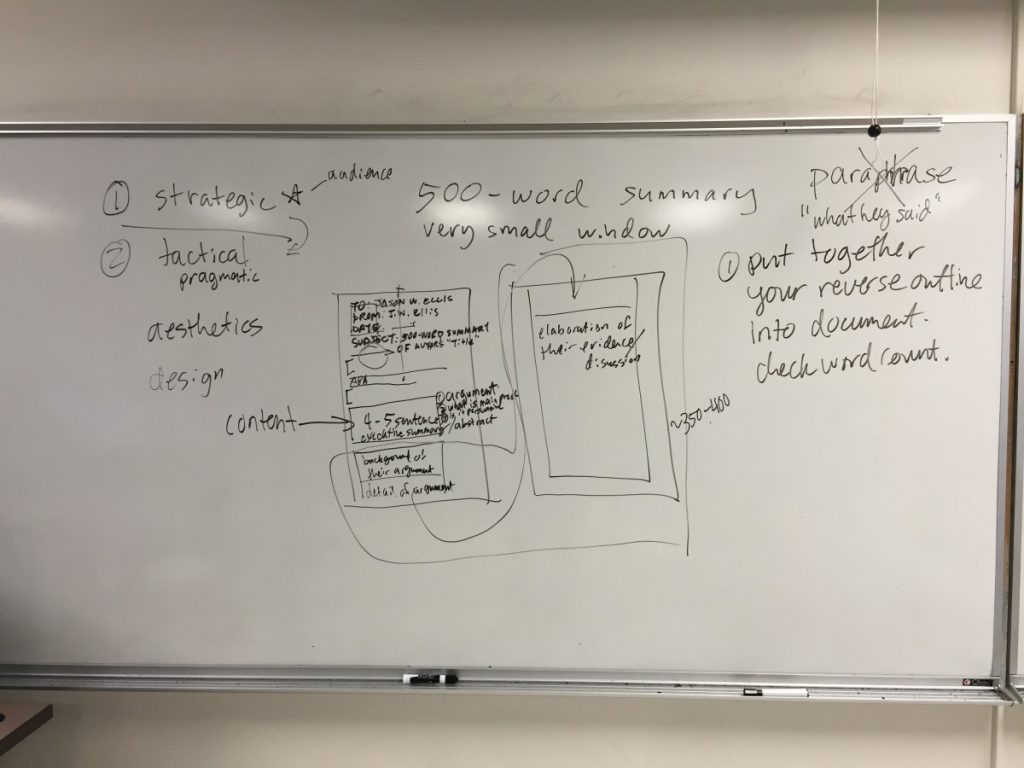During today’s class, we held peer review on your 750-word expanded definition drafts. If you did not receive feedback, you will want to reach out to your contacts in class or enlist friends to help you. Focus on the strategic issues (1. correct memo format, 2. discussion of etymology and history of the term, 3. example definitions and contextual sentences, 4. discussion of those in the appropriate section, 5. use and citation of sources–appropriate sources, and 6. addressing the appropriate, professional audience), and tactical issues (diction, syntax, grammar). Reverse reading is a good technique to help with the tactical issues (reading one sentence at a time from the end of the document to the beginning).
After you are satisfied with the writing, then you may turn to the final polishing touches on your document. Make sure your font (since these documents will be printed, use a serif font like Times New Roman) and heading use is consistent (For heading information in APA format, refer to the Purdue OWL website). You may include photos that are of your own creation or that are available from a source that is either public domain or Creative-Commons Licensed (search for some here). Any image that you did not make/take/create must be cited in your list of references.
One more thing…
After reading your 500-word article summary assignments, I want to give everyone another shot at perfection. Each student should review his or her 500-word document and the previous OpenLab entry for the assignment that discusses layout of the document. Make sure everything about your assignment passes muster. Are you using a single font and size throughout? Are you using the APA format correctly? Are you actually discussing the article in your summary, or are you discussing around the topic of the article without demonstrating that you have actually read it? Finally, read it aloud to yourself and correct the diction, spelling, syntax, and grammar of your writing, too.
Your revised 500-word summary and final 750-word expanded definition are due on Wednesday, October 10.
Visual examples of the two documents are included here: example-750 500-example.








